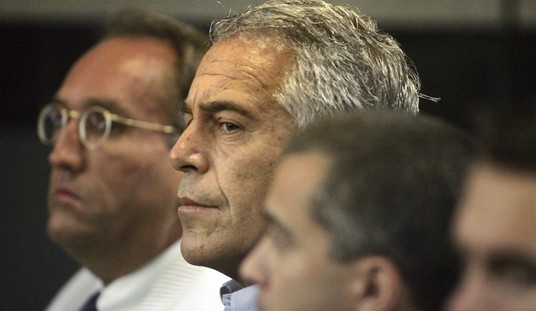The Texas House of Representatives investigative committee’s interim report on the Robb Elementary School shooting in Uvalde, Texas, on May 24th, 2022, has been released. It paints a grim picture of multiple government agency failings leading to the scenario in which the shooter gained access to the school and murdered 19 students, along with two teachers.
The report starts with poignant tributes to the students and teachers, reminding all of the human cost contained within the incident.
The report opens by directly stating: "we're not naming the school shooter nor will we use his image."
They dedicate three pages to the Uvalde shooting victims, though. Very respectable. pic.twitter.com/vLy0pbHomK
— Crab Man (@crabcrawler1) July 17, 2022
An example:
Eliahna “Ellie” Amyah Garcia
Ellie is remembered as a gentle, kindhearted girl who loved spending time with her family and was very close with her grandparents. She enjoyed playing basketball and wanted to be a cheerleader one day. Ellie adored the colors pink and purple and loved a nice bowl of ramen noodles. She was a long-term planner who was already picking dresses and dances for her quinceañera five years away.Irma Garcia
Irma is remembered as courageous and selfless—a wife and mother of four who was always willing to lend a helping hand to anyone who needed one. She was a 23-year teacher. Irma died protecting her students, and her heroism will be remembered forever.
The report first covers the events and security shortcomings prior to the murders that played a large part in allowing the incident to take place. It notes how the Biden Administration’s lax immigration policies factored into a reciprocally lax security stance.
Another factor contributing to relaxed vigilance on campus was the frequency of security alerts and campus lockdowns resulting from a recent rise of “bailouts”—the term used in border communities for the increasingly frequent occurrence of human traffickers trying to outrun the police, usually ending with the smuggler crashing the vehicle and the passengers fleeing in all directions. The frequency of these “bailout”-related alarms—around 50 of them between February and May of 2022—contributed to a diminished sense of vigilance about responding to security alerts.
The school was not properly reinforced with basic preventative security measures to thwart someone attempting entry.
BIDEN BORDER CRISIS PROBLEM —> CONTRIBUTED TO (in part) UVALDE SCHOOL SHOOTING
^^ "The series of bailout-related alerts led teachers and administrators to respond to all alerts with less urgency—when they heard the sound of an alert, many assumed that it was another bailout" pic.twitter.com/dl7WBwtzhf
— Crab Man (@crabcrawler1) July 17, 2022
The school’s five-foot tall exterior fence was inadequate to meaningfully impede an intruder. While the school had adopted security policies to lock exterior doors and internal classroom doors, there was a regrettable culture of noncompliance by school personnel who frequently propped doors open and deliberately circumvented locks. At a minimum, school administrators and school district police tacitly condoned this behavior as they were aware of these unsafe practices and did not treat them as serious infractions requiring immediate correction. In fact, the school actually suggested circumventing the locks as a solution for the convenience of substitute teachers and others who lacked their own keys.
The school district did not treat the maintenance of doors and locks with appropriate urgency. In particular, staff and students widely knew the door to one of the victimized classrooms, Room 111, was ordinarily unsecured and accessible. Room 111 could be locked, but an extra effort was required to make sure the latch engaged. Many knew Room 111’s door had a faulty lock, and school district police had specifically warned the teacher about it. The problem with locking the door had been reported to school administration, yet no one placed a written work order for a repair.
Technology shortcomings played a part.
Other factors delayed the reporting of the threat to the campus and to law enforcement. Low-quality internet service, poor mobile phone coverage, and varying habits of mobile phone usage at the school all led to inconsistent receipt of the lockdown notice by teachers. If the alert had reached more teachers sooner, it is likely that more could have been done to protect them and their students.
The failure of law enforcement, led by then-Uvalde School District Police Chief Pete Arredondo, have been well-documented. The report highlights one additional failure.
While Sgt. Coronado was outside, his body camera recorded several people commenting on the need to find a master key to the classrooms. Once Sgt. Coronado returned inside the south side of the hallway, he found Chief Arredondo on his phone also asking for a key, which was a primary focus of his attention for the next 40 minutes. Chief Arredondo personally tried all of one large set of keys brought to him, 178 and when Sgt. Coronado cautioned him to stay clear of the hallway and the “fatal funnel,” Chief Arredondo responded, “just tell them to f***ing wait.”
The report repudiates the original assertion that a teacher help facilitate the events by leaving a door unlocked.
Another press conference was held the next day outside of Robb Elementary School, and new details emerged. One was: “The back door was propped open. It wasn’t supposed to be … a teacher … propped it open [and] that was an access point that the subject used.” The idea that the door was propped open led to public outcry, and even a teacher who was not implicated was devastated as she wondered whether she had accidentally left a door open. The truth—confirmed by video—is that while a teacher had propped open the west exterior door, she actually saw the attacker approaching and slammed that door shut as she called 911 for help. The door was closed; it simply was either already unlocked or the lock failed to engage, which she could not have known because the doors lock from the outside. On May 31, it was confirmed that her account was correct.
Again, the human element is mentioned in the story.
After the leak of part of a composite video prepared by the FBI, images began circulating condemning some shown on it. “Cellphone cop” was said to be standing around checking his phone, indifferent. What those sharing it did not know was that it was an image of Eva Mireles’s husband. She had been in contact with him already, and when he moved off camera later, she told him she was dying. After receiving this call, he was naturally devastated and was not permitted to return by other law enforcement officers. While this report has cited numerous failures by law enforcement, the actions of this man were not among them.
The problem, of course, is the power, speed, and unaccountable nature of social media. While it allows the truth to spread, it has done far more to amplify incorrect or incomplete information. This is an example of how a picture without context can lead to an incomplete or false impression that is repeated even by respected news organizations. Mark Twain said it best: “A lie can travel halfway around the world before the truth puts on its shoes.”
The report’s summary is brutally honest.
The initial responders to the west building heard gunfire and encountered a hallway with a fog of drywall debris, bullet holes, and empty rifle casings. They converged on Rooms 111 and 112, which they identified as the location of the attacker. They acted appropriately by attempting to breach the classrooms and stop the attacker. The attacker immediately repelled them with a burst of rifle fire from inside the classrooms. The responders immediately began to assess options to breach the classroom, but they lost critical momentum by treating the scenario as a “barricaded subject” instead of with the greater urgency attached to an “active shooter” scenario. It actually was an “active shooter” scenario because the attacker was preventing critically injured victims from getting medical attention.
In the initial response to the incident, Chief Arredondo was actively engaged in the effort to “stop the killing” up to the point when the attacker was located in Rooms 111 and 112, and the attacker fired on responding officers. By this time, there were dozens of officers on the scene, but Chief Arredondo did not assume his preassigned responsibility of incident command, which would have entailed informing other officers that he was in command and also leaving the building to exercise command, beginning with establishing an incident command post. Instead, he remained in the hallway where he lacked reliable communication with other elements of law enforcement, and he was unable to effectively implement staging or command and control of the situation.
The scene was chaotic, without any person obviously in charge or directing the law enforcement response. To the extent any officers considered Chief Arredondo to be the overall incident commander, they also should have recognized that was inconsistent with him remaining inside the building.
There was an overall lackadaisical approach by law enforcement at the scene. For many, that was because they were given and relied upon inaccurate information. For others, they had enough information to know better. Despite obvious deficiencies in command and control at the scene which should have been recognized by other law enforcement responders, none approached Chief Arredondo or any of the officers around him or subordinate to him to affirmatively offer assistance with incident command.
While 911 received communications from victims inside Rooms 111 and 112, Chief Arredondo did not learn about it because of his failure to establish a reliable method of receiving critical information from outside the building. Eventually, Chief Arredondo came to understand there probably were casualties inside Rooms 111 and 112. Even if he had received information of surviving injured victims in the classrooms, it is unclear that he would have done anything differently to act “more urgently.”
The Committee has not received medical evidence that would inform a judgment about whether breaching the classroom sooner than the approximately 73 minutes that passed between the first responders’ initial arrival at the west building and their eventual breach of the classrooms could have been saved lives or mitigated injuries. As described above, it is likely that most of the deceased victims perished immediately during the attacker’s initial barrage of gunfire. However, given the information known about victims who survived through the time of the breach and who later died on the way to the hospital, it is plausible that some victims could have survived if they had not had to wait 73 additional minutes for rescue.
But yeah, blame guns.














Join the conversation as a VIP Member